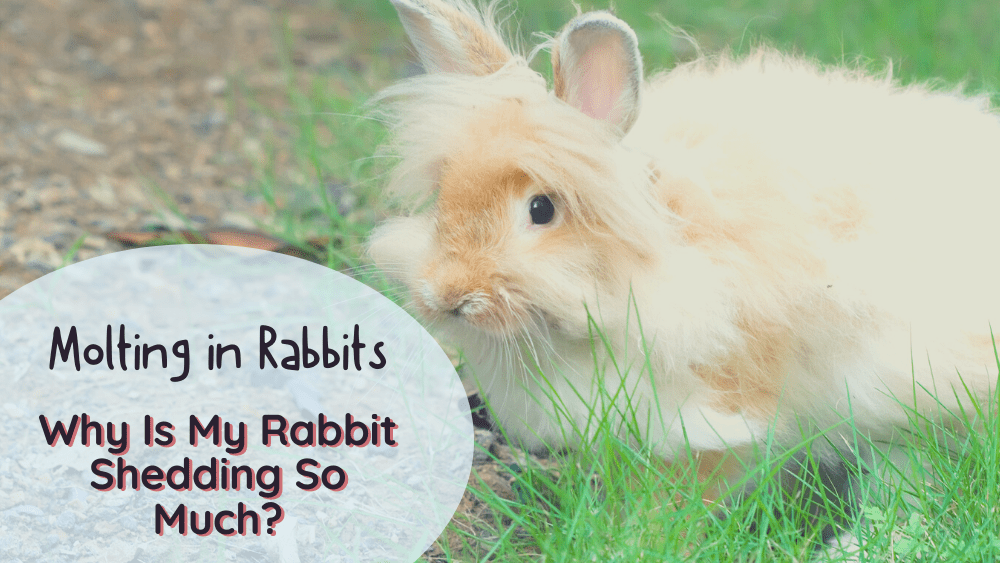Rabbits make wonderful pets, as they are generally clean and relatively easy to manage. However, like many furry animals, they tend to lose a lot of hair periodically. Some rabbits even seem to constantly shed their coats.
This process is called molting, and is sometimes referred to as ‘throwing their coat’.
Molting can be quite dramatic and can result in a change in your bunny’s color and even holes in its coat. While this can be normal, sometimes it can be a symptom of an underlying issue.
If you’re wondering ‘why is my rabbit shedding so much?’, I’ve put together this article to guide you through the topic of rabbit molting, compiled from the necessary science-based and veterinary-approved information you need to know about molting in your rabbit.
This article will discuss the following:
- What is shedding or molting in rabbits?
- What does molting look like?
- How much shedding is normal?
- How to take care of your rabbit’s fur when it is molting
Why Is My Rabbit Shedding so Much?
If your rabbit is suddenly shedding a lot more than usual, it could be because of a change in temperature or season, stress, or a medical condition. You should brush your rabbit’s coat to get rid of any loose fur, but if you have any concerns then you should see a vet.
Molting in rabbits most commonly happens because your bunny is trying to cope with seasonal temperature changes. Rabbits typically grow a thick coat for winter to help them stay warm. However, come spring, it sheds it for a thinner coat in preparation for warmer weather.
What is Shedding or Molting in Rabbits?
Molting in rabbits also referred to as shedding, is when your bunny periodically sheds its coat and grows a new one.
Rabbits generally molt four times a year. A normal molting cycle usually involves two heavy seasonal shedding events and two lighter ones which you may not even notice.
Rabbits tend to lose some hair or even all of it during this process, and it’s not concerning. They may also show some behavioral changes like not wanting you to pet them or pick them up. Others may even get aggressive during this period.
This is because their skin becomes more sensitive at this time. The behavior change is temporary and should resolve within a few weeks.
Why does molting happen?
Shedding fur or molting happens due to variations in seasonal temperature. Rabbits typically acquire a long, thick coat in preparation for the cold of winter.
As the weather warms up in spring, they shed their winter coat and grow a thinner one in preparation for warmer temperatures. Rabbits cool themselves through the blood flowing close to the surface of the skin, since they cannot lose heat by panting.
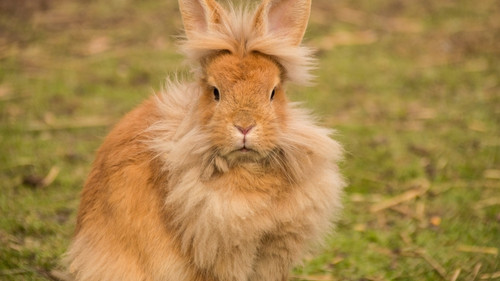
For this to work, they need to shed their warm winter coat and develop a thinner coat for summer.
However, molting varies from rabbit to rabbit and from breed to breed. Wild rabbits tend to undergo two major molts each year while domestic rabbits, on the other hand, may appear to constantly shed their fur.
This is because they live in a different environment from their wild counterparts, and also shed in response to changes in hours of daylight and darkness.
What Does Molting in Rabbits Look Like?
Once your bunny is ready to shed its coat, it typically starts with the warmest part of its body.
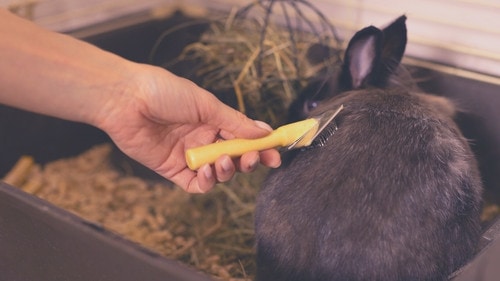
The standard shedding pattern begins from around the nose, spreads to the rest of the head, goes down the neck area and back, sides of the body, and finally ends on its rump.
Some do not have a molting pattern and lose fur all over the body at once. You may also notice that your bunny’s skin is darker during the process.
The appearance of a rabbit’s coat during the molting process depends on the rabbit. Some rabbits shed their fur gradually and can maintain their sleek coat even while molting.
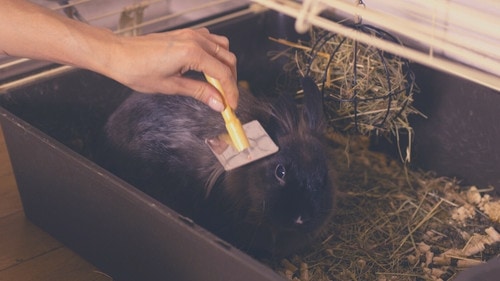
Some rabbits, however, shed their fur within a short period and may then start to appear shaggy or develop bald spots. These eventually grow with time.
Learn the normal shedding pattern of your rabbit so that you can notice immediately if something is wrong.
Shedding in wild rabbits vs domestic rabbits
Molting is a natural process that occurs in both domestic and wild rabbits. Wild rabbits will generally shed all their fur twice a year in preparation for colder or warmer temperatures.
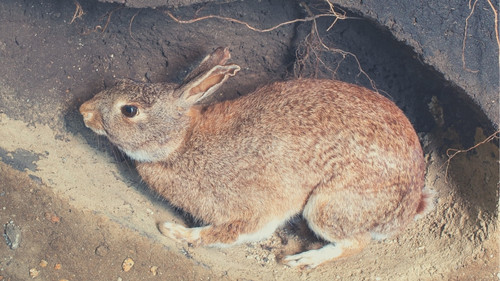
Domestic rabbits tend to molt all year round, especially if you keep them indoors. Pet rabbits can sometimes confuse the hours of daylight and darkness, and this may cause them to molt more often.
House rabbits that live in environments with central heating will also molt regularly.
Shedding in long-haired breed rabbits
Long-haired breeds of rabbit need special consideration when they are shedding. While a wild rabbit is able to groom their shed fur, long-haired breeds have been specially bred as pets and would not be able to groom the quantity of shed hair effectively.
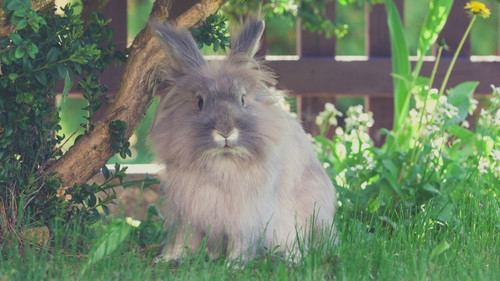
You should brush your pet daily while they are shedding, to prevent hair collecting in the rabbit’s stomach.
Shedding of the baby coat in young rabbits
While a rabbit’s adult coat is shed every 3 months, that pattern only begins when the adult coat grows at around 5 months of age.
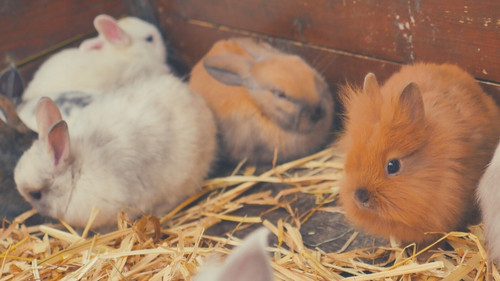
Baby rabbits, called kittens or kits, are born completely hairless. They start to grow some fur when they are about one week old. By the time they are twelve days old, they would have grown a thick baby coat.
By week 5 or 6, they shed this coat and grow in a transitional coat, which they will shed around 4 to 5 months. They then grow in a sleeker adult coat, which may be a different color from their previous coats.
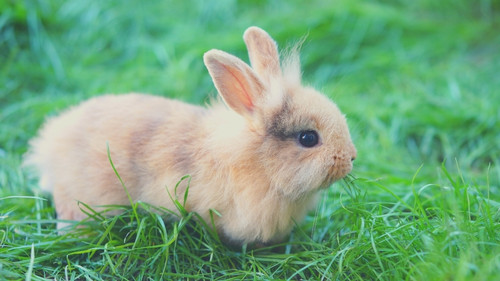
Young rabbits typically do not shed much fur. Their first major molt occurs after they grow in their adult fur. If your baby rabbit is shedding a lot of fur, this may be a cause for concern, and you should consult your vet.
How much shedding is normal?
Rabbit owners know that rabbits shed a lot of fur. It is normal to find fur balls or have fur flying around if you have a rabbit.
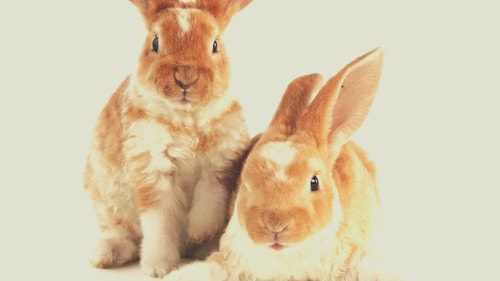
A rabbit undergoing molting can usually groom itself and may take 2 to 6 weeks to completely shed its fur. If you notice that it takes longer than this, then your rabbit may require your help to get rid of all the dead hair on its body.
There is a standard pattern for a normal molt. Your rabbit will shed significantly when spring or winter arrives. Usually, the rabbit will groom themselves (or their partner), but you may need to help brush out the loose fur.
However, if your rabbit continually sheds a lot of hair during the cold months, and is unable to groom themselves effectively, this may be a problem, and you should speak to your vet.
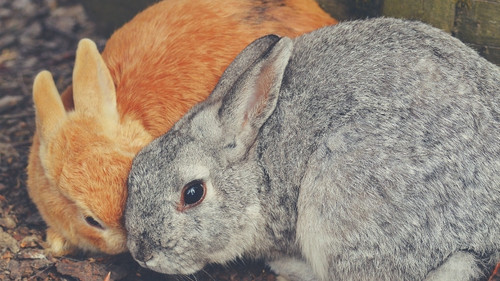
A normal molt will occur uniformly all over the body of your rabbit, starting at the head and ending with the rump. You may notice your rabbit losing its fur in clumps, often resulting in bald patches on its body. This is normal, and the bald patches will eventually grow in.
However, if you spot a bald patch and there is no sign of molting, or if your rabbit seems to have finished the molt and the bald patch is still present, check with your vet in case it is a sign of illness or self-mutilation.
Again, understanding your rabbit’s normal molting pattern should help you spot issues with shedding as soon as they develop.
When is shedding excessive?
A natural molting pattern is consistent: rabbits tend to lose and grow back fur at a uniform rate.
If you notice that your pet bunny is suddenly covered in bald patches, this may be because it is shedding excessively. This happens because it is losing old fur faster than it is growing new fur. It can be a result of stress, hormones, or diet changes.
If your rabbits molt in patches instead of all over, then there could be an underlying medical issue.
Here are some of the more common ones:
Alopecia
Alopecia is a condition where your rabbit’s hair falls out abnormally, and isn’t replaced by normal fur growing through. There are several possible reasons for this, and you should consult a vet to help diagnose the problem.
Parasites
Parasites may also be another cause of excessive hair loss in rabbits. Bunnies usually find it difficult to groom the top of their heads, shoulders, and rump, which makes these areas susceptible to fur mites.
Fur-mites are visible to the naked eye and are sometimes referred to as walking mites or walking dandruff. Areas of dense, flaky skin on the neck, back, and tail are common symptoms of this condition.
To avoid this, you should groom your rabbit once a week if it is a short-haired breed and daily if it is a long-haired breed. You should also consider grooming them more often when they are molting.
If your rabbit is infested with mites, your vet will be able to prescribe an effective topical treatment or preventative spot-on.
How to take care of rabbits’ fur during molting?
Your rabbit may require a little extra care when it is molting. Rabbits are usually good groomers and remove dead hair from their ears and faces using their paws, and from the rest of the body using their lips and incisors.
During this process, they may ingest some of the hair. Although this is normal, it could potentially cause problems in the rabbit’s digestive system in large quantities. Rabbit fur can form hairballs in the stomach, block the digestive system, and potentially kill them.
Here are a few tips that will help you care for your rabbit during molting;
- Groom rabbits daily. Brushing is essential during the molting process. Gently removing the fur will help speed up the process and keep your rabbit’s coat in good condition.
- Remove shed fur from trays and bedding. This is to ensure that excess fur does not end up in the rabbit’s stomach and obstruct the passage of stool.
- Use good rabbit grooming tools. Wide-toothed combs and brushes are best. A rabbit’s skin is delicate, you don’t want to irritate it with the wrong grooming tool. This grooming kit has everything you need for grooming your rabbit.
- Give them access to a lot of hay and good drinking water. This helps keep your rabbit’s digestive system clean and functional.
Can rabbit fur cause allergies in people?
Rabbit fur can be very annoying when you accidentally inhale it, it rarely causes severe allergies. However, some cases have been reported, where individuals have been allergic to a rabbit’s dander, saliva, or urine.
Conclusion
Rabbits tend to lose a lot of hair throughout the year, focused in four main shedding events. However, there are some conditions that can cause your rabbit to lose fur excessively. It’s important to get to know your rabbit’s normal molting pattern, so you can spot if there’s a problem. Rabbits are good groomers but it’s a good idea to brush them during their molt to avoid fur matting or health issues.
If this guide to molting in rabbits has been useful, please share it with your friends! If you have any questions about your rabbit’s molting pattern, feel free to drop them in the comment section below.


